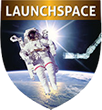Course Details
Course Summary
This course builds on the liquid rocket engine design factors developed in Course 5095, Liquid Rocket Engine Design. Using instructor-provided "intelligent spreadsheets", the individual elements that define a new engine system are expanded to specify and select requirements for the design. Case studies are introduced to assist the user in understanding trade-offs and achieving the proper balance in the various elements of the finished design.
Course Materials
Include extensive notes and reference materials. Attendees are required to bring a laptop computer configured with Excel 97 or later to class. Sample spreadsheets used in the case studies will be distributed by the instructor.
Who Should Attend
Launch vehicle propulsion system engineers, project engineers, program managers, and other technical professionals who require or desire a deeper knowledge of liquid rocket engine systems design.
What You Will Learn
How to select and specify requirements for liquid rocket engine design. Engine system power balance. Engine start considerations. Use of software to pull it all together.
Course Outline
- Design of a New System: Requirements.
Selection of: 1) Engine Thrust Level. 2) Engine Velocity Increment Capability. 3) Specific Impulse Requirements. 4) Propellant Combination. 5) Mixture Ratio. 6) Chamber Pressure. 7) Nozzle Area Ratio. 8) Engine Powerplant Cycle. - The Engine System Power Balance Problem.
Introduction to the Engine Power Balance problem. Use of "intelligent spreadsheets" in solving the Engine Power Balance problem. Case Study 1: Space Engine Power Balance. Case Study 2: Pump-Fed Booster Engine Power Balance. - Engine Start - System Considerations and Constraints
Instructor
David Mohr has an international reputation as a rocket engine designer and propulsion systems lecturer. He designs and evaluates thermodynamic cycles for air-breathing, nuclear and rocket powerplant systems; and builds rocket engine components. Mr. Mohr has developed an innovative liquid rocket ignition device for reliable high-altitude-ignition. He provides rocket propulsion design, analysis, fabrication and test expertise to many aerospace companies such as Applied Astronautics, Hybridyne Aerospace, Lockheed-Martin and Aerojet. Early in his career, he assisted Rocketdyne in developing the Space Shuttle Main Engine (SSME). One current project is the development of a liquid oxygen turbopump for a new, high-pressure propulsion system. Mr. Mohr fabricates and tests rocket engines and fluid pumping machinery in his own facilities. He has lectured at numerous commercial and government facilities including NASA's Stennis Space Center and Italy's FiatAvio. Mr. Mohr has contributed sections to the Handbook of Turbomachinery and the Handbook of Machinery Dynamics.
